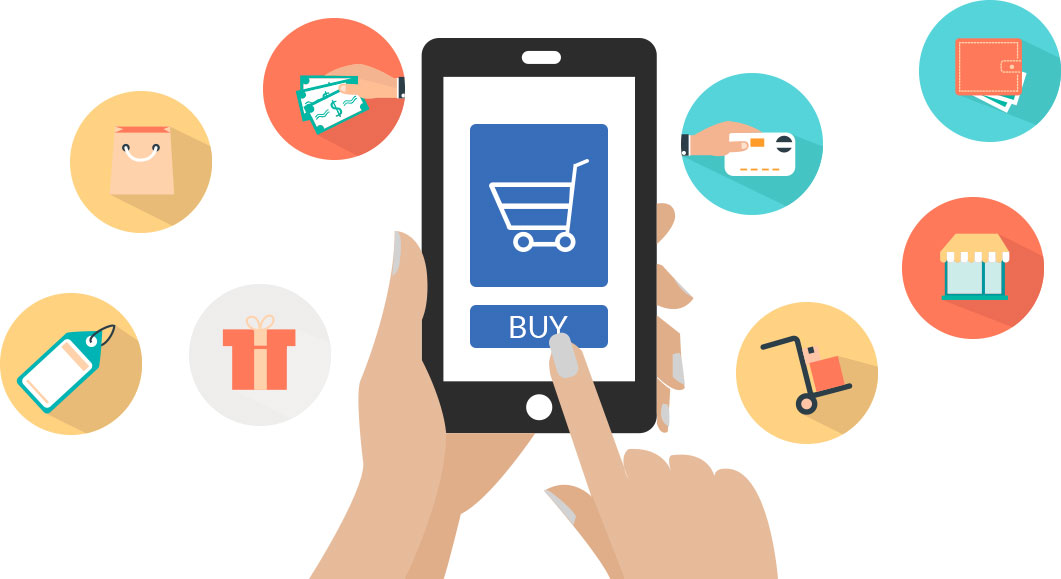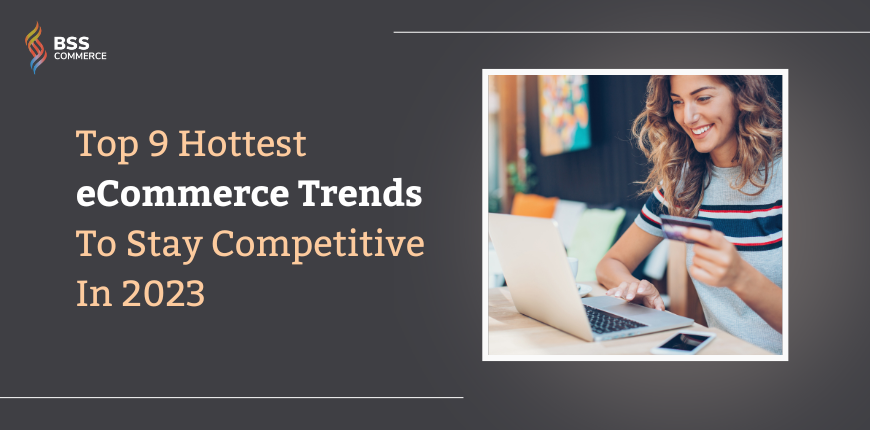Ecommerce trends can provide insights into how the industry is evolving and how consumers are shopping online. It helps you attract your target audience and get them to convert.
By staying up to date on the latest trends, ecommerce businesses can better understand the needs and preferences of their customers and adapt their strategies accordingly.
So let’s check the top 9 eCommerce trends 2024 to make sure your business stands out in an increasingly competitive online shopping environment!
Top 9 eCommerce Trends In 2024
Table of Contents
Omnichannel

With loosened COVID restrictions and the desire for in-person interactions, customers are ready for in-store experiences.
However, a Google report shows that 56% of people who were shopping in-store still used their smartphones to look up products or do product research.
99 firms’s statistics also show that nearly 75% of shoppers use multiple channels before purchasing, and 73% of eCommerce shoppers report using various channels during their customer journey.
That’s why, more than ever, businesses should practice omnichannel shopping to sell and communicate with customers through multiple channels at any given moment.
CHECK NOW: The best Magento-native POS solution with all the features you need to run online and offline operations.
Mobile commerce

Mobile commerce is dominating the eCommerce world.
Bank My Cell’s data show that currently there are 86.41% of the world’s population is using smartphones.
In 2022, mobile commerce reached $430 billion in revenue, and Statista forecast that by 2025 that number will increase to $710 billion.
Also according to Statista, mobile devices account for 71% of retail traffic and generate 61% of online shopping orders.
For eCommerce retailers, it means that more and more customers would purchase your products/services through their mobile devices. So it’s crucial to improve the mobile shopping experience of your business. You can do it by optimizing your website for mobile devices and developing a mobile commerce app.
LEARN MORE: Why is Mobile App one of the hottest trends for businesses in 2023?
Social media commerce

Love it or loathe it, there is no denying that social media has taken over the world.
Smart Insight reported that now 59% of people are using social media platforms, and undoubtedly the number will keep increasing.
Not only are people spending more time on social apps, but they are also using them in new ways. Online shoppers rely tremendously on their social feeds for shopping, suggestions, and simple eCommerce sales.
According to Statista, global sales via social media platforms were estimated at $992 billion in 2022, and by 2026, social commerce sales will reach around $2.9 trillion.
Thus, social media isn’t just a branding channel anymore. You need to incorporate social media into your eCommerce strategies to reach and engage with more target audiences.
Voice commerce

Voice assistants like Siri and Alexa were once associated with asking location directions, weather-related questions, or calling someone. But now, voice assistants are becoming a core component of online shopping.
In 2022, Statista predicted $40 billion worth of transactions will be made through voice-activated devices like Google Home or Amazon Echo.
Plus, eMarketer estimated that 33.2 million US shoppers would use the voice search feature on their smart speakers to shop in 2022.
According to research by Navar, 51% of shoppers use voice search to research products, and 36% of shoppers use voice search to add products to their shopping lists.
Thus, it’s high time to make your website more voice search friendly. Consider how you can optimize product pages for customers’ voice search commands.
Live shopping

Live shopping is known as retailers using social media platforms to merge live streaming with commerce. This approach allows customers to ask questions, receive responses, and make purchases in real time. The live selling key is interactivity.
Although live shopping is still in its infant stages in most of countries in the world, it has been a hit in China. Mckinsey’s insights show that in just 3 years, China’s livestream selling market grew from $3 billion to $171 billion.
And Vimeo predicted that the global live streaming market will reach €237 billion by 2027.
Shoppers are more and more into live shopping. Klarna reports that 60% of shoppers say live streaming improves the shopping experience, and 47% would prefer live shopping to in-store shopping.
Live shopping allows brands to be creative in how they present their products, engage with customers, and make sales. Use live streams smartly, and your business can gain better engagement, rapid increase in sales, and increased brand awareness.
Augmented reality and virtual reality

For quite some time, AR and VR have played a pivotal role in eCommerce. AR and VR are now key for helping customers visualize products they may not be able to see physically.
Retail Brew reported that shoppers engage with 3D images of products 50% more than static ones.
And according to eMarketer, in 2023, around 97 million people in the US are expected to use AR at least once a month.
People don’t feel very confident when buying online. The average cart abandonment rate of eCommerce stores is 70%, and 40% of shoppers who abandon their carts say that they worried they would have to return them after receiving.
So AR and VR can be the core solution to solving the eCommerce industry’s major problems: high cart abandonment and return rates.
Personalization

Exploding Topics’s statistics show that 60% of consumers say they will become repeat customers after a personalized shopping experience.
Thus, if you can leverage the customers’ data to bring your customers a more personalized experience, customer engagement and loyalty will grow exponentially. Or else, you will lose them to brands that invest in getting to know their customers.
It means you should engage your customers on the channels they prefer, and support them throughout their entire customer journey with personalized offers.
Subscription models

Subscription commerce is becoming a more important type of eCommerce. Online merchants and marketplaces are driving retention and revenue with subscription models.
In fact, Kearney showed that almost 35% of weekly online shoppers use subscriptions.
After all, customers always expect simplicity and convenience when shopping. For products/services that they use regularly, the subscription model can eliminate manual ordering and delivery, making the purchase process seamless.
AI

AI has a significant impact on helping eCommerce businesses offer better customer experiences and create creative solutions.
The 2 most important applications of AI for eCommerce stores are chatbots and personalized advertising campaigns.
Chatbots
With a chatbot, your online store will have a constantly available salesperson that can engage with customers one-on-one. It helps remove customers’ obstacles on their shopping journey and increases the conversion rate.
Statista expects that in 2023, chatbot revenue will hit $137.6 million.
Personalized advertising campaigns
Based on customer data, AI can assist in creating content and recommendations for a specific customer, which help improve marketing campaigns and personalize customer experiences.
Leverage the power of AI in your store with BSS’s Magento ChatGPT module!
Conclusion
In this article, we have introduced to you the top 9 eCommerce trends that are promising to make or break your business in 2024.
We hope this is helpful and good luck to you!
